Bosses wave white flag on working from home battle
While the job market remains tight, big companies have been unable to master how to bring their workforce back.
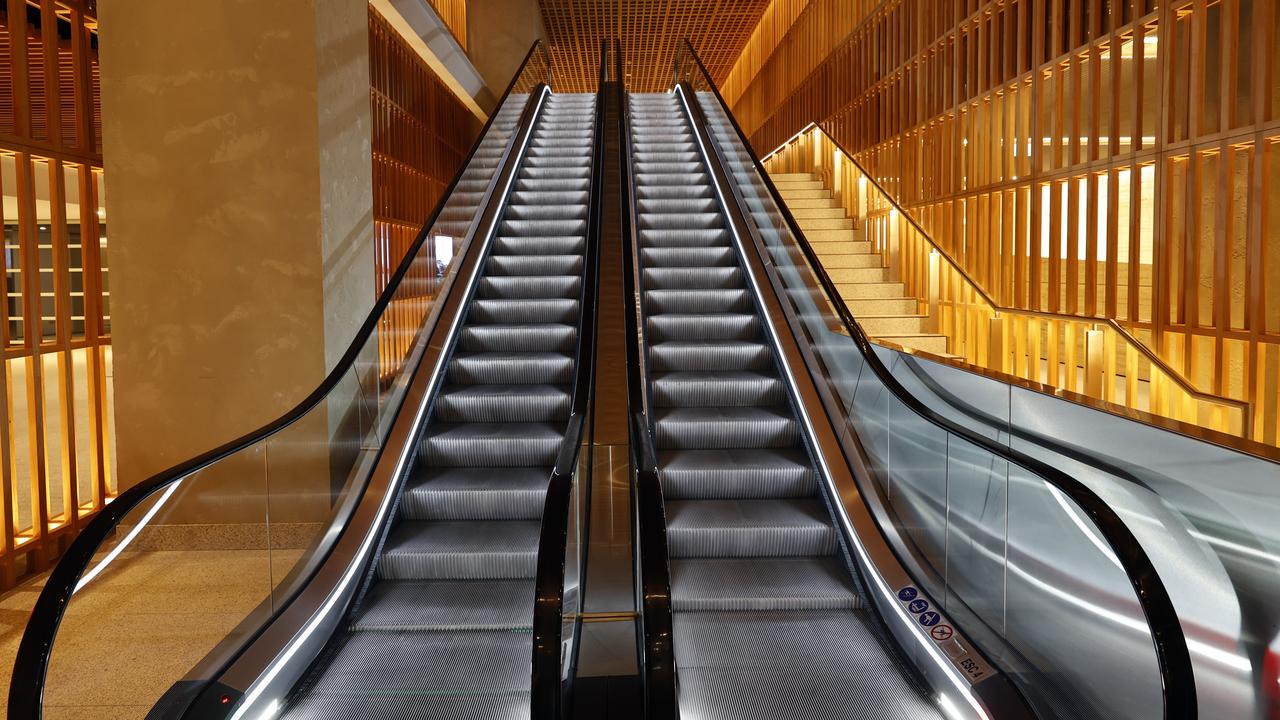
A high-profile investment bank has set aside a single day of the week when no Zoom meetings between Melbourne-based colleagues are allowed. For staff, the fear of missing out usually sees the office full on that day.
Some companies are using a more carrot than stick approach, offering coffee vouchers and worker rewards, but in the white-collar world working from home is here to stay. And while unemployment remains low, bosses have given up the fight.
One CEO of a major bank gets the daily turnstile data for his major capital city offices. Sydney and Melbourne were barely running at 15 per cent capacity last week. Sydney was lower than Melbourne, which on some days nudged 18 per cent.
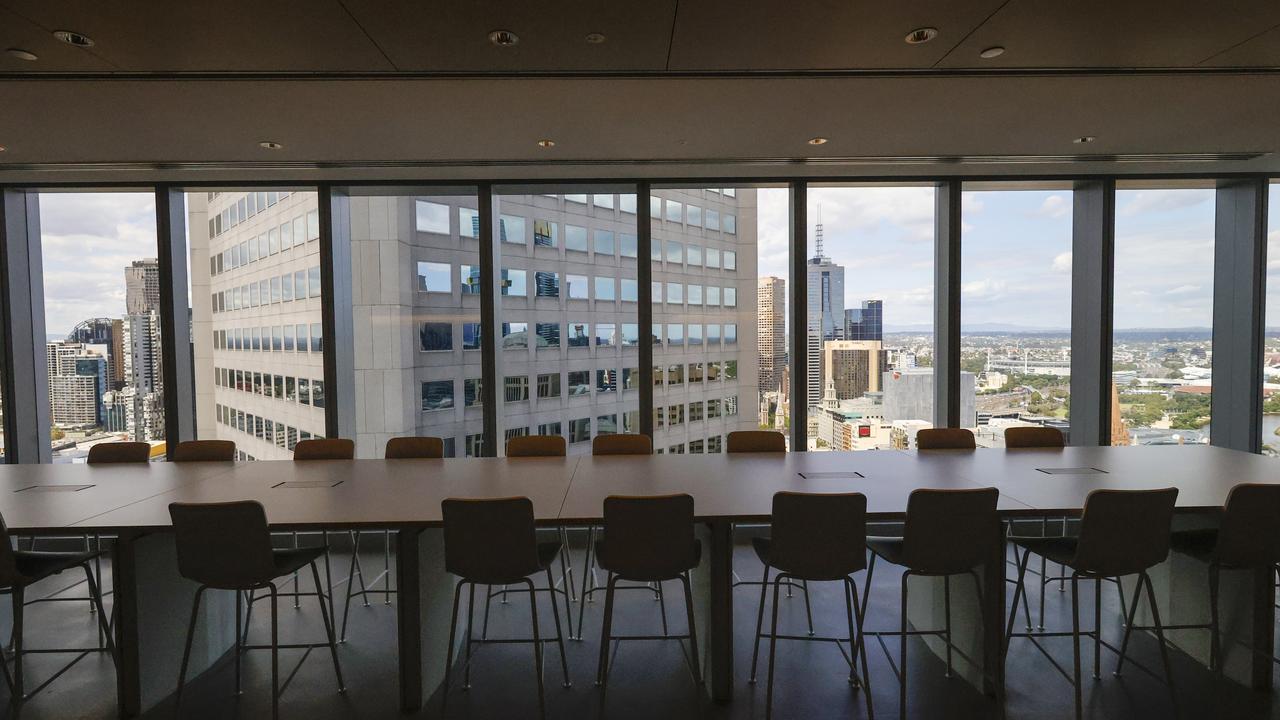
Companies have pulled back on enforcing their three-day-a-week policies, fearful it could push skilled staff away when they are in desperate demand. Last summer’s Omicron Covid wave and, then the winter resurgence with rolling seven-day case numbers now averaging 12,600 in NSW and nearly 9000 in Victoria, are also keeping workers away. However, this downturn is in contrast to busy suburban shops and restaurants, as well as crowded airports.
Hybrid working, here and around the world, marks one of the great social workplace experiments to come out of the Covid-19 pandemic. There is furious debate over whether it makes staff away from the office desk less productive or better workers. But most bosses and boards conceded there will need to be another major step-change for staff to return to the office full time.
For now, those running corporations and paying rent on vast floor plates are stuck in two worlds. They generally want their employees to be working together in the one spot at least part of the time.
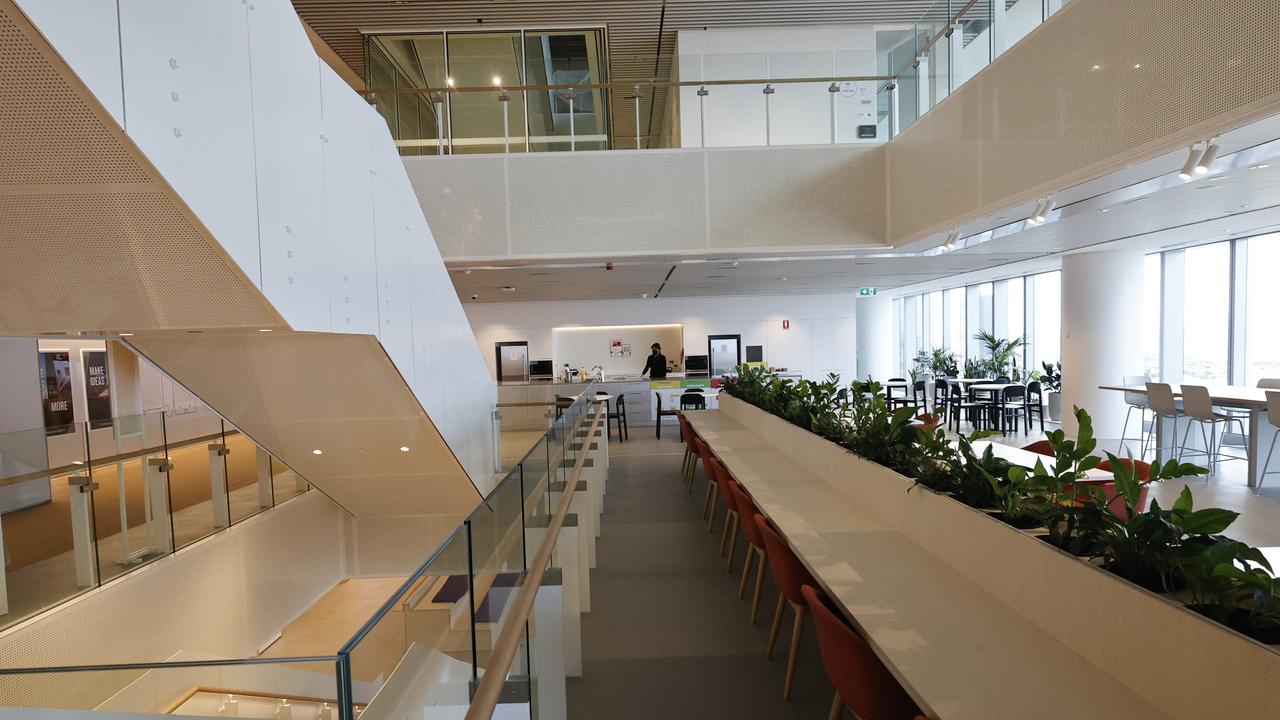
While the job market remains so tight no one has been able to master how to bring a big workforce back, particularly after hundreds of thousands of city workers have negotiated all the disruption of the past two-and-a-half years and formed the habit of working from home.
Even the smartest companies in the world such as Google parent Alphabet or Apple have struggled to get tens of thousands of highly paid Silicon Valley staff in for just a few days a week to their hi-tech campuses. And with jobless numbers pushing 50-year lows, Australian bosses know where they sit in the pecking order.
“While unemployment is at 4 per cent the power has shifted. Our people are so mobile,” says one CEO of an ASX top 20.
“It will never go back to five days, it’s not going to happen. But clearly it’s our job to convince people there are benefits in coming back to the office, not just productivity but benefits for them: career, learning and culture,” he says.
‘No hustle’
Younger workers who are in the rising stage of their career are seen as having more likely to lose from staying away from the office. Compounding this is the lack of experienced relative older staff where they pick up their most valuable lessons.
Jamie Dimon the pugnacious chief executive of JP Morgan Chase last year told The Wall Street Journal working from home “does not work for younger people” or for those who “want to hustle”. He also said it doesn’t work for corporate culture. But even he has recently been forced to soften his stance saying in the bank’s annual shareholder letter that 40 per cent of the bank’s workers will be under a hybrid model and 10 per cent will work at home full time.

In Australia there are now 41 per cent of people regularly working from home, up from 32 per cent before the pandemic. The ABS data, released last week, shows 22 per cent of workers have a permanent flexible working arrangement in place. Before the pandemic similar arrangements were just 13 per cent.
In coming days some of the nation’s biggest white collar employers Suncorp, Commonwealth Bank, AMP, QBE and Telstra are set to provide earnings updates with some to also outline the rhythm of the hybrid working experience among their own staff.
Still it is not all smooth sailing. There are tensions starting to rise in manufacturing and construction and also services businesses where work from home divide is emerging as the “management vs front line”. CEOs talk about how they need to tread with care when it comes to back office staff and white collar workers who want to remain at home next to the heater while their dozer drivers and builders are working outside each day on potentially dangerous work sites.
Tech change
The Productivity Commission in its interim report on the 5-year review of the economy raises the stakes arguing there could be “significant productivity benefits” in having people from home given it forces businesses to roll out technology faster.
One major employer in the Sydney CBD says they are not enforcing hours for staff to return to the office but conversations are certainly taking place among team leaders to build expectations of working week at least some time in the office. They note 75 per cent of staff are coming into the office one day a week. Attendance falls sharply to below 30 per cent for two days a week and trails off sharply for three or more days.

Some see hybrid working as ammunition in the war for talent with flexibility more valuable to some employees than an additional percentage point in pay rise talks. Workers report that the time and financial saving, particularly for those on long commutes, is often more valuable than cash rewards.
“Organisations need to just push themselves differently,” says one HR director of a major transport company.
Even a new breed of the nation’s top executives are embracing the freedom of not being at their office desks full-time and several now have a degree of work-life balance that CEOs of another generation could only dream of.
Office demands
Last year audit and consulting firm Deloitte Australia introduced DeloitteFlex which removed the need to be in the office for any set amount of time. The program introduced by Deloitte chief executive Adam Powick was designed to empower more than 10,000 staff about where they work, based on their client, teams and individual needs.
“We know that people really value the ability to have more say and influence over when and where they work, and we are seeking to create a work environment that actively supports meaningful work flexibility,” Powick tells The Australian.
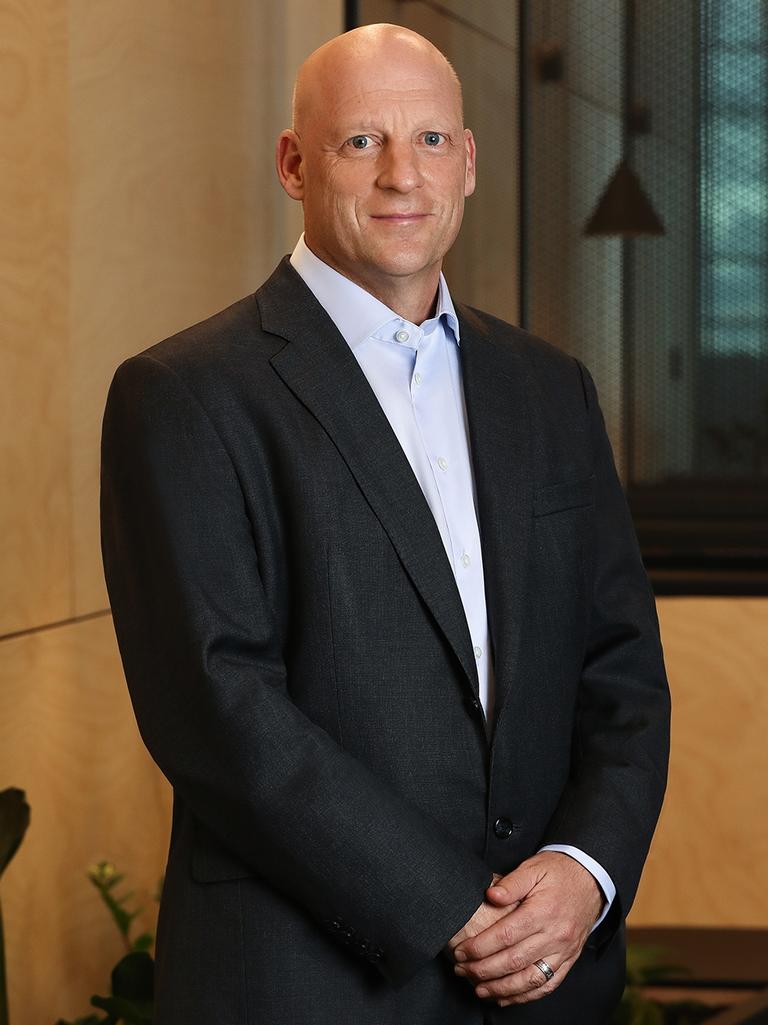
“We don’t yet have all the answers, but we are open to innovating and pushing the boundaries as the days of coming into the office and working 9 to 5, five days a week are clearly a thing of the past,” he says.
Even before the global pandemic the idea of work from home was starting to gain official traction.
A recent Fair Work Commission review of its workplace agreements database has shown that in the December quarter 2019 around 350 current federal enterprise agreements had provisions for home-based work or “telework”. These provisions were structured in a way that enable employees to perform some or all their work at home or at another site away from the office.
While these agreements represent a small number of enterprise agreements in total, they cover just over 20 per cent of employees. The industries most represented in the awards were public servants and financial and insurance services.

The full impact of a hybrid working model is still to play out in the real world, particularly with rents and demand for office space holding up.
Still, the lack of certainty around flexible working arrangements is causing headaches for companies attempting to plan around longer term. There are midweek days when many people seem to be in at once while offices sit empty on Mondays and Fridays chewing up energy costs.
One banker says the trend appears to be settling around administration and technology staff – particularly those working on projects – who are more likely to be working from home. Even with flexible working there is still an expectation among staff that they still have their own desk in the office, but the reality is that companies can’t hold big empty floor plates indefinitely.
Cost of hybrid
Property Council of Australia figures show the office market remains surprisingly robust with demand for office space in Sydney above average and largely steady in Melbourne despite the impact of the pandemic. Vacancy rates in the Melbourne CBD were at 12.9 per cent, Sydney was 10.1 per cent, according to the property council’s July edition of Office Market Report. Brisbane and Adelaide vacancy rates were at around 14 per cent while Perth was 15.8 per cent despite the city being in the midst of a mining boom.
Property Council Chief Executive Ken Morrison points out there are currently no work from home directions from state health authorities which has been providing the advice during the pandemic, but an official statement last month by the Commonwealth chief medical officer Professor Paul Kelly to consider allowing employees working from home in response to the winter Covid-19 wave sent a confusing message to business.
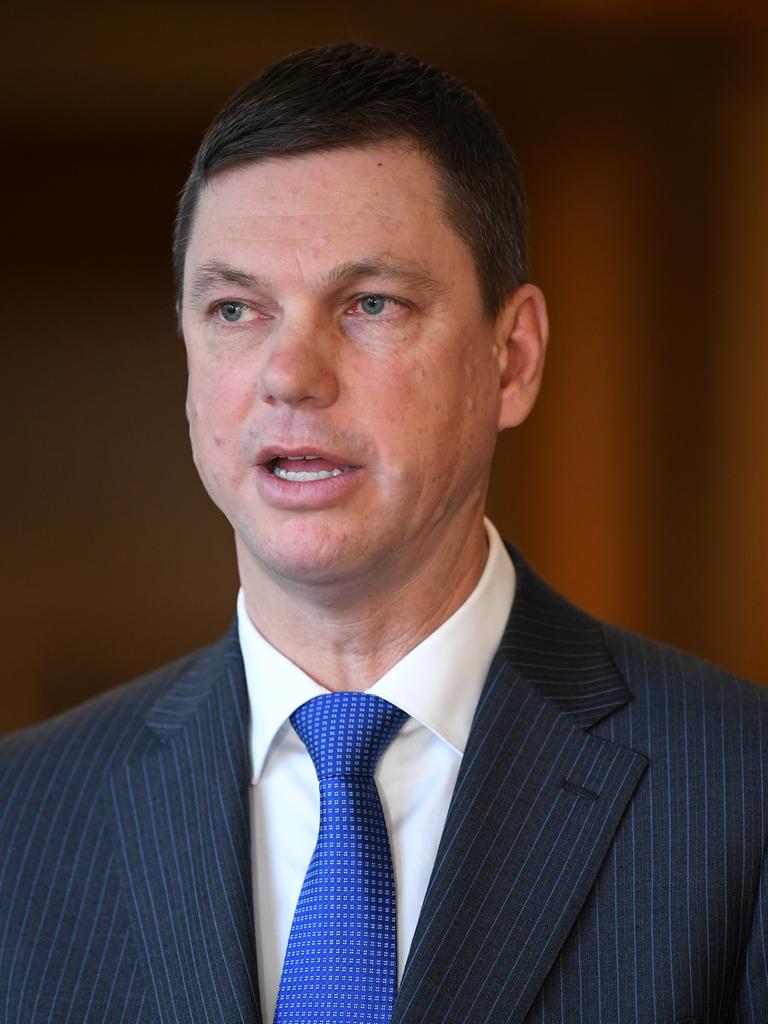
“It just means that business is in an environment of uncertainty because you have someone in that office who made that comment. And it’s hard to ignore that when you’re trying to manage the health and safety of your staff,” Morrison says.
“It’s really important for governments and their health advisers to be clear about what advice is being provided to business,” he says.
Morrison argues that the hybrid working model is not a cost free activity.
“The cost is borne in CBDs, by the cafes, and the restaurants and the retailers that rely on people being in the city and being their customers…People do lose, and that’s the businesses and their staff in those CBDs that we rely on to be that ecosystem that helps make our cities attractive and interesting places,” he says.
johnstone@theaustralian.com.au
Originally published as Bosses wave white flag on working from home battle







